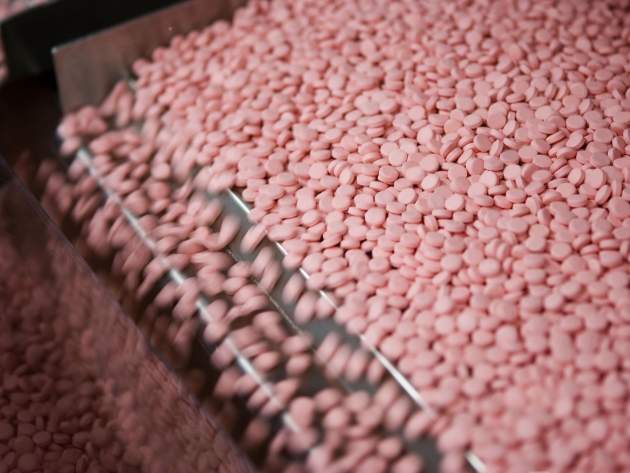

On 11 January 2017, the new US president, Donald Trump, laid out his ambitions for the US pharma industry. Reversing the trend of the past few years – which has been to outsource ever more manufacturing to plants overseas – he called for a return to domestic production.
“We have to get our drug industry coming back,” he said at a press conference. “Our drug industry has been disastrous. They’re leaving left and right. They supply our drugs, but they don’t make them here.”
A few weeks later, President Trump spoke about the pharma industry in more depth, vowing to speed up the approvals process while bringing down drug costs. Specifically, he discussed advancing stronger trade agreements, removing outdated regulations and reforming the tax code to drive investment.
Industry lobbyist Pharmaceutical Research and Manufacturers of America (PhRMA), which was in attendance, agreed with Trump on many counts. According to their estimates, these policies will translate to strong industry growth and as many as 350,000 new jobs over the next decade.
Other commentators, however, have disputed whether a return to US manufacturing is compatible with lowering drug prices. Some have suggested that reducing the number of imports might, in fact, hike up costs overall, given that it would mean shifting away from low-cost production sites in Asia.
How well do you really know your competitors?
Access the most comprehensive Company Profiles on the market, powered by GlobalData. Save hours of research. Gain competitive edge.

Thank you!
Your download email will arrive shortly
Not ready to buy yet? Download a free sample
We are confident about the unique quality of our Company Profiles. However, we want you to make the most beneficial decision for your business, so we offer a free sample that you can download by submitting the below form
By GlobalDataSo what is the truth of the matter, and how might President Trump’s plans, if enacted, change the state of the US pharma supply chain?
Dramatic changes
A shift towards domestic production – interpreted in its most radical sense – would certainly be far reaching. While around 60% of finished medications sold in the US are made locally, particularly complex products like biologics, many pharma firms rely heavily on manufacturing plants abroad. In 2015, pharmaceutical imports to the US were valued at over $86bn.
This trend has been underway for some time, with the amount of foreign-made drug products doubling between 2004 and 2009 as more production sites gained approval. According to supply chain consultant Per Karsten Stolle, speaking to Stat News, the cost of manufacturing in developed markets can be up to five times higher than it is in India or China. Firms that outsource may benefit from lower labour costs and propitious tax arrangements.
In fact, it is hard to gain a handle on the extent of outsourcing, because US trade statistics do not fully reflect the complexity of the global supply chain. Drug products are liable to cross borders at several points during their lifecycle, meaning that even when the drug itself is assembled domestically, around 80% of active ingredients are produced outside the US. Today, the world’s leading supplier of active pharmaceutical ingredients (APIs) is China.
It is unclear whether President Trump’s crackdown would also extend to pharmaceutical ingredients made abroad, or how this could be enforced. However, some pharma executives are concerned that he might impose heavy import taxes on APIs and excipients, as well as on the finished products.
Focus on quality
Although President Trump has not yet detailed how he plans to ‘get [the] drug industry coming back’, one possible target for reform is generics, which account for much of the increase in overseas production.
For Drew Quality Group, a Massachusetts-based non-profit, Trump’s ambitions are both timely and achievable. The charity was established several years ago to address drug shortages and drug pricing issues, as well as creating jobs and onshoring generics manufacturing.
“It’s interesting when the President talks about something you’ve been working on for years, because it shows that other people recognise this is something we need to do,” says president and CEO, Deborah Drew. “Hopefully we can come together and make it really happen.”
Drew’s analysis of the problem is damning – namely that US pharma companies, over the last decade or so, have become concerned with their profit margins at the expense of quality. This has led to a raft of problems, not least the well-publicised safety violations at factories in Asia.
“If a company has manufacturing outside the US or Europe, and they’re serious about quality, they would invest into making sure that their employees anywhere in the world met the quality standards they found acceptable,” she says.
Legacy products
Drew’s point of focus is ‘legacy’ products – the generic drugs which pharma companies continue to produce despite low profit margins. Because these drugs don’t make much money, pharma companies typically want to manufacture them as cheaply as possible. Selling them onto a rival company generally isn’t an option, because there’s a chance that company would hike up prices, tarnishing their own reputation.
Their choices, then, are to look abroad, risk dealing with a less scrupulous firm, or think about discontinuing production. Drew feels that affiliating with a non-profit might be a better solution.
“Our idea is as a non-profit we can continue to work with the frontline innovative companies,” she says. “We could take their legacy products, guaranteeing that their patients will get the product until there’s no more patients that require it. This is the way to stabilise supply without having to punish the for-profit innovators or first-tier generic manufacturers.”
Because of their relatively small size, companies like Drew’s would be able to respond quickly to patterns of demand. They would also create jobs on US soil, particularly in economically depressed areas. Although Drew Quality Group does not yet have a manufacturing plant, it is looking to acquire its first facility sometime this year, perhaps boosted by the new political momentum.
A hopeful future
There are other ways, too, that Trump could lower drug prices while shifting production to within US borders. The website Vox offers three suggestions: allowing payers to negotiate drug prices with the pharmaceutical industry; improving competition from cheaper generics; and reducing marketing expenditure.
For the time being, however, the specifics are still unclear, and we are unlikely to see a wave of pharma companies rushing in to switch up their supply chain. Ultimately, how they respond will depend on a variety of factors – how great are the incentives for onshoring, how steep are the penalties for offshoring, and how pricey is the US really, relative to plants in Asia?
Drew feels that, while domestic drug production has acquired a bad reputation, its costliness is often overstated.
“People talk about compliance and regulatory costs, but in my opinion the costs only get high if you don’t comply,” she says. “It’s like a speeding ticket – the speeding ticket is only expensive because you were speeding, but if you never were speeding, you never would have got a ticket.”
She feels that while changing mindsets is likely to take a while, it is well within the industry’s grasp.
“We’ve gone through a phase where the trend is to move overseas – cut back on this, cut back on that – and we’ve painted ourselves into a corner,” she says. “Focused, right-sized manufacturing is the future, and that manufacturing can absolutely be done in the United States. If you do it right you can easily compete on an international market.”







